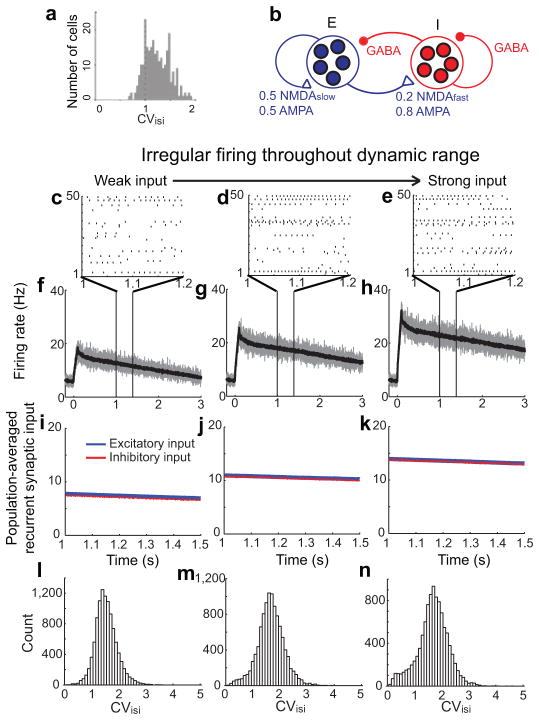Fig. 5.
Irregular firing in spiking networks with graded persistent activity. a, Experimentally measured irregular firing (coefficients of variation of inter-spike intervals, CVisi, higher than 1) during persistent activity in a delayed-saccade task. Adapted from [16]. b, Structure of network of spiking neurons with negative-derivative feedback. c–k, Network response to a brief (100 ms) stimulus applied at time 0. c–e, Raster plots illustrating irregular persistent firing of 50 example excitatory neurons. f–h, Instantaneous, population-averaged activity of excitatory neurons, computed within time bins of 1 ms (gray) or 10 ms (black). i–k, Balance between population-averaged excitation and inhibition following offset of external input. l–n, Histogram of CVisi of active excitatory neurons during the persistent firing. Note that, for activity with strong input, a small subset of neurons fire regularly at high rate and exhibit low CVisi (n). This reflects that the heterogeneity resulting from our simple assumption of completely randomly connected networks can result in excess positive feedback in some clusters of neurons.

